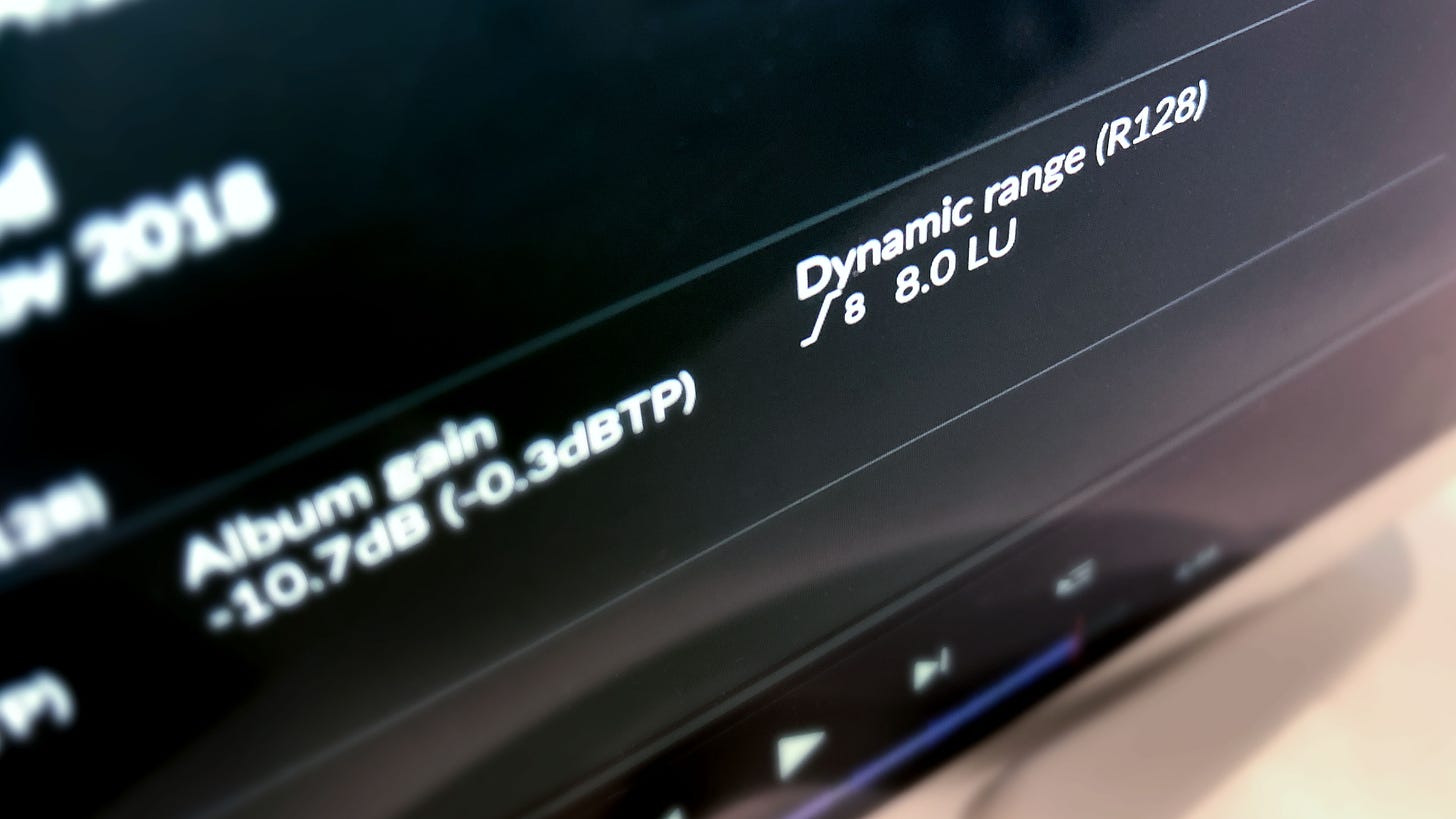Dynamic Range and Sound Quality: Myth Busted
Greater Dynamic Range (DR) is not a valid methodology for assessing sound quality (SQ) between different music genres
If you play an MQA file in Roon (for example) and compare it to a compressed .mp3 of the same track, the MQA file sounds far superior. One can’t help but notice that the Dynamic Range (DR) rating is higher on the MQA file, indicating that compression has been removed. It’s no surprise then that Audiophiles tend to believe that removing compression gets you closer to the original sound of the master recording.
However, as stated on the Roon website, “Dynamic range measures the difference in volume between the softest and loudest portions of a track or album. It is most useful when comparing different releases of the same material…. Music with a lot of dynamic range isn't necessarily better than music with less. Orchestral performances will nearly always have a much wider dynamic range than Heavy Metal, but that doesn't necessarily mean that the recordings are any better or worse.”
https://kb.roonlabs.com/Dynamic_Range
“Dynamic Range” in the audiophile world doesn’t literally mean that the music is more “dynamic” as one would use the term in casual conversation. It doesn’t mean the kick drum really kicks or that the music has any percussive impact or that it sounds really lively. In fact, Roon uses something similar to the R.128 standard for DR which specifically doesn’t count the most dynamic peaks of the track. Here is further reading on DR standards:
Ultimately, it is misinformation to tell people that the sound quality of orchestra recordings are inherently better than modern pop because they see higher DR numbers. There may be tenable grounds for saying orchestra recordings tend to have higher SQ than pop, but simply looking at DR values isn’t one of them.




